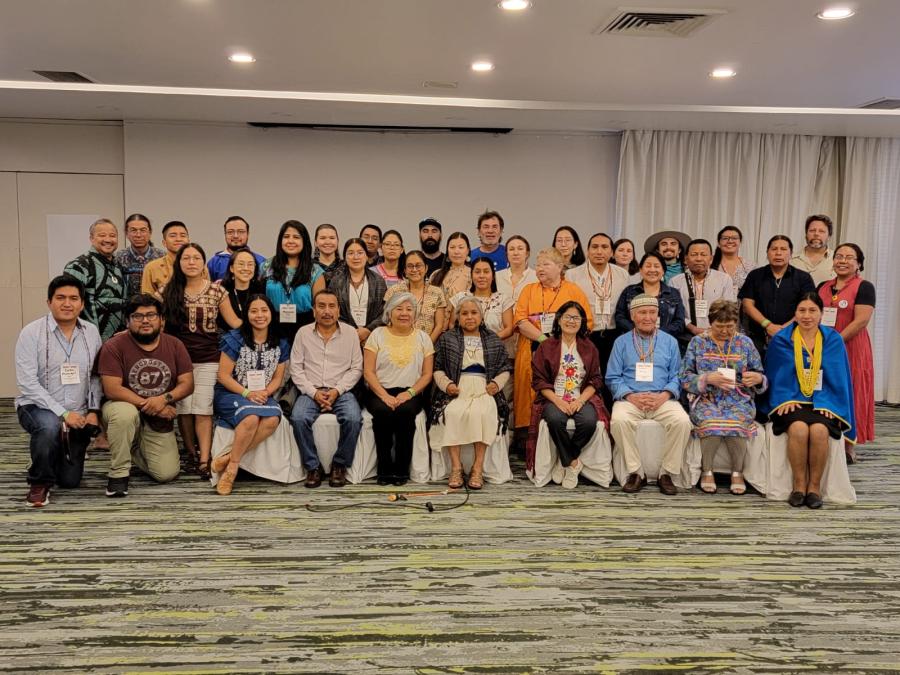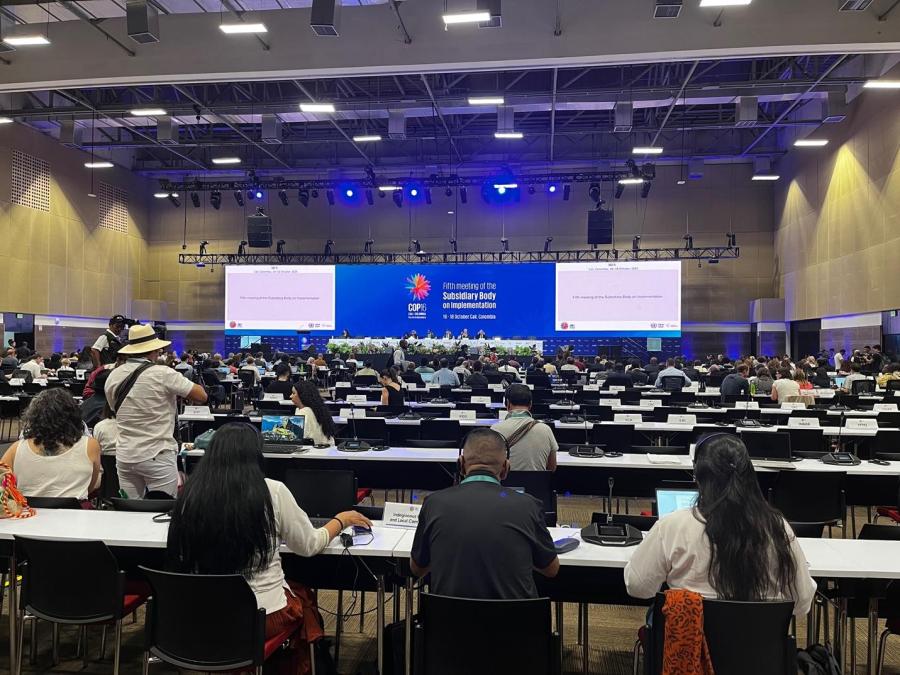Endangered Language Program
Each year our Endangered Languages Program collaborates on local fundraising and advocacy priorities with our grassroots language program partners and advisors: The Euchee Language Project, the Northern Arapaho Language Lodges, the Sauk Language Department of the Sac and Fox Nation, and the Wopanaak Language Reclamation Project. We’ve recently added a new advisor and partner program run by Dr. April Counceller at the Alutiiq Museum Language Program in Kodiak, Alaska. With each of our partners we commit to supporting a minimum of five grant proposals, and/or fundraising/outreach events, efforts that have generated more than $850,000 in direct aid to tribes since these partnerships were first established during 2007-2008. The money has paid for Native language immersion education activities and materials such as master-apprentice teams, preschool and kindergarten classroom equipment, language grammars and teaching books, youth after-school programs, and summer camps. We expect to expand our circle of partner programs and core advisors during 2011.
At the national level, Cultural Survival will again co-sponsor the 2011 National Native Language Revitalization Summit with the Alliance to Save Native Languages in Washington, D.C., to be held in conjunction with the conclusion of the Breath of Life Archival Institute for Indigenous Languages June 13–24. (Note: in this section of our winter issue, we described the event in a way that suggested Cultural Survival was responsible for the Breath of Life Institute. That is not the case, and we apologize for any misunderstanding.) While bringing together Indigenous language advocates, teachers, and speakers to share model program approaches for teaching new generations of speakers of Native languages is a key objective of the summit, the primary goal is to mobilize attendees for an Advocacy Day to bring their personal stories of the value of Native languages to the U.S. Senate and House of Representatives Appropriations Committees, which authorize annual federal discretionary funding for tribal language programs throughout the United States.
Over the next few months, we will continue working with the National Congress of American Indians and nearly a dozen other educational and cultural organizations to pressure President Obama to sign an executive order mandating extensive federal interagency collaboration and support for tribal language programs. Cultural Survival helped the National Alliance to Save Native Languages to craft the proposed executive order.
This January, Cultural Survival joined more than 400 federal grant recipients from across the United States, including Alaska, Hawai‘i, Guam, and the Northern Mariana Islands in attending the Administration for Native Americans (ANA) conference in Washington, D.C. The conference provided training, networking, and roundtable discussion sessions on language teaching methods, private grant opportunities, integrating Native languages into Head Start, and other educational settings. Sauk Language Department coordinator Terrie Kinsey and Cultural Survival program officer Jennifer Weston presented a poster and teaching manual from Cultural Survival’s three-year ANA-funded grant partnership with the Sauk Language Master Apprentice Project, “Thâkiwaki peminamôka ênâtowêyakwe: Making a home for our language.” ANA funding supports 20 hours weekly of the Sauk program’s master-apprentice language learning for teachers who will staff a preschool immersion site at the conclusion of the ANA grant.
Finally, We Still Live Here: Âs Nutayuneân, an hour-long film directed by Anne Makepeace and produced with the assistance of Cultural Survival Endangered Languages Program officer Jennifer Weston, had its public premiere in January at the Santa Barbara International Film Festival, and continues its journey to film festivals nationwide before a fall 2011 broadcast on PBS. Upcoming spring screenings include the Big Sky Documentary Film Festival in Missoula, Montana, the Martha’s Vineyard Film Festival in Massachusetts, the Miami International Film Festival in Florida, and the Environmental Film Festival in Washington, D.C. We Still Live Here: Âs Nutayuneân tells an extraordinary story of cultural survival and Indigenous language recovery among the Wampanoag Nation of southeastern Massachusetts, and stars Cultural Survival’s partners and advisors from the Wôpanâak Language Reclamation Project. A portion of the proceeds from the film will benefit Cultural Survival’s Endangered Languages Program.
To read more news from our local and national Endangered Languages Program work, visit www.cs.org/current-programs.
Global Response
Our campaign to stop a mine in Didipio, Philippines, had good news this month, as the Philippines Human Rights Commission asked the government to consider cancelling an Australian company’s mining permit because of “gross violations of human rights” that they have committed against the local Indigenous populations. The Global Response letter-writing campaign helped Didipio residents persuade the national Human Rights Commission to conduct an on-site investigation in Didipio. Reports were also submitted to the United Nations Committee for the Elimination of All Forms of Racial Discrimination.
Although our campaign to halt a silver mine on Wixárika land in Mexico has not yet had the same kind of results (and note we said “yet”), we have received a letter from the Wixárika expressing their gratitude for the support of Cultural Survival members. Here’s what they wrote: “We write to express our gratitude for the support and solidarity of your organization in the case of mining concessions in our sacred site called Wirikuta. Since we learned about this threat in our community it has been very difficult first of all to accept what is happening and then to communicate the magnitude of the problem and reach audiences nationally and internationally, given our community’s scarce resources.Cultural Survival’s action alert came at a critical moment.. The prestige of your organization helped us make the case to members of the media . . . . We also hope that Cultural Survival’s members respond with enough letters to affect the attitude of our government officials, increasing the pressure needed to stop the mine in Wirikuta.”
Community Radio Project
In January, at the request of a local community group, ADISMI, in San Miguel Ixtahuacán, Guatemala, Cultural Survival's Guatemala Radio Project staff members traveled west to the mountains of San Marcos to participate in a four-day workshop on how to initiate and operate a community radio station. San Miguel, a community of Mam-speaking Indigenous Mayans, has struggled for years against the Canadian corporation Goldcorp, which operates a much-disputed gold mine in the area. Activists in the community saw a need for a locally run means of communication and invited Cultural Survival to provide training and support to their project. They are currently raising funds for a amplifier and radio antenna. This is the second trip Cultural Survival staff have made to San Miguel.
In December, Cultural Survival's partner radio association Mujb`ab`l yol held a four-day workshop on HIV/AIDS awareness. Over 60 Indigenous radio workers participated in the event, covering topics such as symptoms, transmission, prevention, and sensitivity, as well as radio locution, script writing, and audio recording. A local theater group, Luces Escondidas, performed a skit, and three local organizations chipped in to pay a cost of the food and lodging. The event concluded with the recording of public service announcements on HIV/AIDS in Spanish and Mayan languages.



